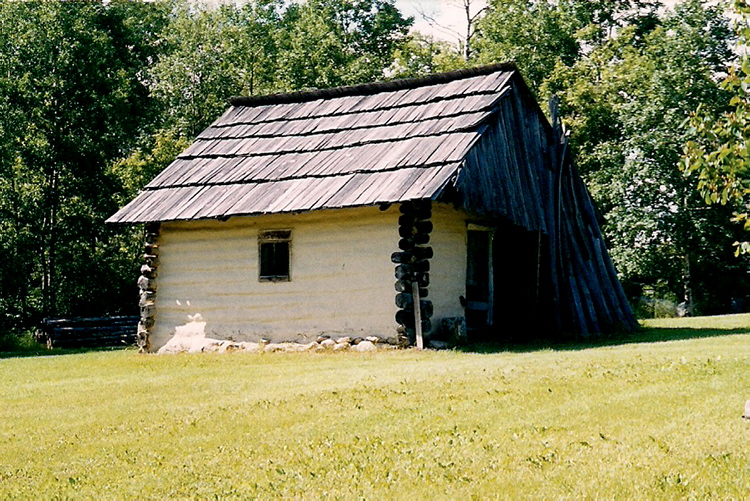The pioneer life of a unique family
Advertisement
Hey there, time traveller!
This article was published 10/07/2013 (4442 days ago), so information in it may no longer be current.
Visiting Wasyl Negrych Pioneer Homestead is the next best thing to travelling back to the turn of the 20th century.
Nestled away off a dusty, nearly-deserted gravel road just north of Gilbert Plains, Man., this pristine property is well worth seeing.
In the late 1800s, immigrants to Canada were offered deeds to generous portions of land on the prairies at very reasonable prices, under the condition they build homesteads and remain as settlers. Along came Wasyl Negrych, his wife Anna, and seven children, from the highlands of Western Ukraine. They bought a quarter section of land in 1897 for the compulsory $10 fee.

The temporary shelter that would house the growing family (five more offspring would be born in Manitoba, bringing the total number of Negrych children to 12) was constructed of poplar poles and cowhide. This was their home until 1899, when construction of the main house was completed.
The Negrych clan was amazingly resourceful and self-sufficient. They raised cows, pigs and chickens. They built barns, granaries, a chicken coop, a pigpen and a bunkhouse. They grew and harvested wheat, rye, barley, oats and flax. They maintained vegetable and herb gardens, and an abundant orchard. They made their own clothing, oil, rope, utensils and tools.
All building materials were found on the farm site, with structures using traditional building techniques of logs with saddle and notch cornering. Heavy wooden doors were made movable with hand-carved wooden door hinges, and secured with innovative door locking systems utilizing a hole in the wall, an odd-looking wooden key, and a sliding plank of wood lined with strategically-placed notches.
The original house has a sturdy beamed ceiling and an extremely rare wooden roof — the only Canadian example of a long-shingle Carpathian roof. A modest dwelling, its layout consists of a central kitchen area and two side rooms. Both the interior and exterior are finished with handmade plaster, which keeps the buildings refreshingly cool in summer and toasty warm during winter. The residence remains intact today on its original site, and is touted as the oldest known Ukrainian dwelling in Canada.
The Negrych family left a lasting impression on the Canadian frontier, and unknowingly made their mark on Canadian history. Clothing, letters, pictures, magazines, knick-knacks, and countless other personal items still adorn the home. The walls remain decorated with religious images, family pictures, and a Gilbert Plains calendar from the year 1922.
Strolling among the homestead’s ten intact buildings, surrounded by a thick forest of towering tamarack and poplars, one can’t help but feel the family’s spirit still lingering. Remarkably, the two youngest Negrych children lived there into the 1990s without modern improvements — no electricity, running water, sewer, and telephone lines were ever introduced.
It truly is an impressive site, believed to be the earliest and best preserved example of a Ukrainian farm in Canada. Designated a Heritage Site by the Province of Manitoba, it was also commemorated with a bronze plaque and recognized as a National Historic Site by the Historic Sites and Monuments Board of Canada.
RoseAnna Schick is an avid traveller who seeks inspiration wherever she goes. Email her at rascreative@yahoo.ca.

RoseAnna Schick
Travelations
RoseAnna Schick is an avid traveller and music lover who seeks inspiration wherever she goes. Email her at rasinspired@gmail.com
Our newsroom depends on a growing audience of readers to power our journalism. If you are not a paid reader, please consider becoming a subscriber.
Our newsroom depends on its audience of readers to power our journalism. Thank you for your support.




